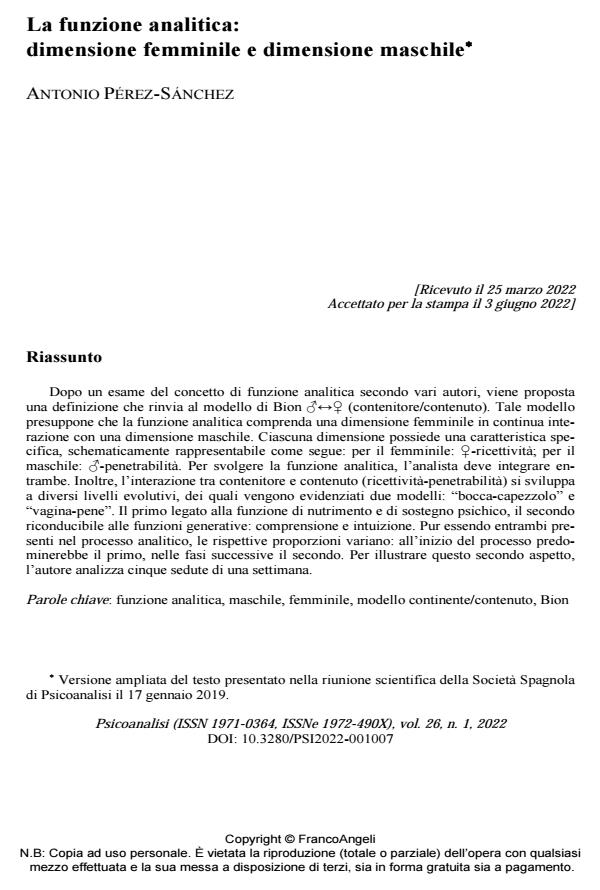The Analytic Function: Female Dimension and Male Dimension
Journal title PSICOANALISI
Author/s Antonio Pérez-Sánchez
Publishing Year 2022 Issue 2022/1
Language Italian Pages 17 P. 91-107 File size 195 KB
DOI 10.3280/PSI2022-001007
DOI is like a bar code for intellectual property: to have more infomation
click here
Below, you can see the article first page
If you want to buy this article in PDF format, you can do it, following the instructions to buy download credits

FrancoAngeli is member of Publishers International Linking Association, Inc (PILA), a not-for-profit association which run the CrossRef service enabling links to and from online scholarly content.
After reviewing the concept of analytic function according to various authors, a definition is proposed based on Bion’s model ♂↔♀ (container/contained). This model implies that in the analytic function there is a feminine dimension in continuous interaction with the masculine. Each dimension has a specific characteristic, which we would schematically represent as follows: for the feminine: ♀-receptivity; and for the masculine: ♂-penetrability. In order to perform his analytical function, the analyst should integrate both factors. Moreover, the interaction between container and containment (receptivity-penetrability) develops at different evolutionary levels, of which we would highlight two patterns: "mouth-nipple" and "vagina-penis". The first would be linked to the nourishing and psychic support function, while the second would be connected to the generative functions: understanding and insights. Although both are present throughout the analytic process, the respective proportions vary: a greater predominance of the first pattern at the beginning of the process, and of the second at later stages. Five one-week sessions are presented to illustrate the second aspect.
Keywords: Analytic function, masculine, feminine, model of container/contained, Bion
Antonio Pérez-Sánchez, La funzione analitica: dimensione femminile e dimensione maschile in "PSICOANALISI" 1/2022, pp 91-107, DOI: 10.3280/PSI2022-001007